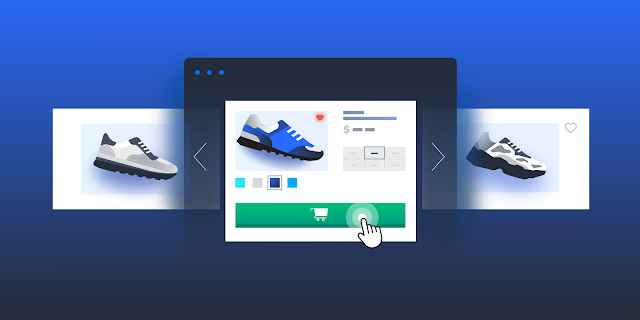eCommerce Design Trends That Are Shaping Online Shopping in 2025
The way people shop online is changing—and fast. As technology evolves and consumer expectations rise, eCommerce businesses must stay ahead of the curve with smart, innovative, and user-first website designs. In 2025, an eye-catching layout is just the starting point. Today’s eCommerce websites must deliver speed, personalization, emotional connection, and seamless user experience across all devices.
Whether you're launching a new online store or revamping an existing one, here are the top eCommerce design trends you need to watch—and why embracing them could make or break your brand’s digital success.
1. Mobile-First and Responsive Design
What’s trending:
Simplified navigation for one-hand use
Sticky call-to-action buttons (like “Buy Now” or “Add to Cart”)
Scalable images and fonts
Speed-optimized mobile pages
Google also favors mobile-first websites, making this design approach essential for better visibility and conversions.
2. Immersive Product Experiences (AR, 3D, and Videos)
Leading features:
360° product views
Augmented Reality (AR) to “try before you buy”
Product videos that show real-life use
Zoom-enabled high-res photos
The more interactive the product experience, the more confident a shopper feels—ultimately boosting conversion and reducing returns.
3. Minimalist and Clean Layouts
Characteristics:
Plenty of white space
Clear typography hierarchy
Grid-based product listings
Limited distractions or pop-ups
Minimalist websites also tend to load faster and are easier to navigate—two factors that heavily influence bounce rate and dwell time.
4. Personalized Shopping Journeys
How it looks:
Product recommendations based on browsing history
Personalized landing pages
Email journeys with smart product suggestions
Geo-based pricing and promotions
Personalization enhances customer engagement and significantly improves repeat purchases.
5. Micro-Interactions and Subtle Animations
Examples:
Heart animation when adding a product to the wishlist
Floating “Add to Cart” pop-ups
Animated icons during checkout
These micro-interactions not only improve usability but also make the shopping experience feel dynamic and intuitive.
6. Dark Mode and Soothing Color Palettes
Reasons for its popularity:
Reduces eye strain, especially at night
Looks sleek and modern
Enhances product photo visibility
Offers a premium feel for high-end brands
Soft pastels and earthy tones are also available, especially for brands focusing on wellness, fashion, or sustainability.
7. Voice Search and Conversational Interfaces
Design implications:
Voice-enabled search options
Clear voice-readable product descriptions
Fast-loading, accessible interfaces
Designers are now thinking beyond visuals—how a site “sounds” to a smart device matters too.
8. One-Page Checkout and Streamlined Payment
What’s trending:
One-page checkout flows
Social logins and guest checkout options
Digital wallet integration (PayPal, Apple Pay, Google Pay)
Autofill for faster form completion
The easier the checkout process, the higher your conversion rate.
9. Sustainability Messaging and Ethical Design
Examples:
Eco-friendly badges and labels
“Our Mission” pages with visual storytelling
Transparent product sourcing info
Ethically designed packaging highlights
Designing for purpose and product can boost brand loyalty and engagement.
10. Headless Commerce for Flexibility
Benefits:
Better design flexibility
Faster load times
Integration with apps, IoT devices, and AR
Scalable design structure
As content and commerce blend more deeply, headless architecture gives brands complete control over their design story.
Conclusion
The eCommerce world in 2025 is not just about showcasing products—it’s about creating seamless, engaging, and personalized digital experiences that win hearts and drive sales. As trends continue to evolve, brands must remain agile and design-centric to stay ahead in a competitive landscape.
From mobile-first design and AR integration to simplified checkouts and sustainability messaging, each trend serves one ultimate goal—delighting the customer.
At Dazonn Technologies, we help eCommerce businesses stay future-ready by designing high-performance, conversion-optimized, and trend-focused online stores.










Comments
Post a Comment